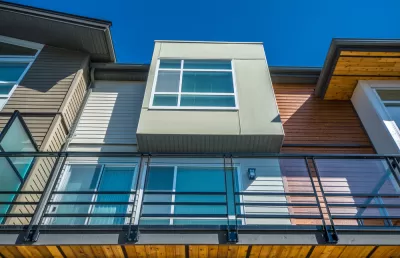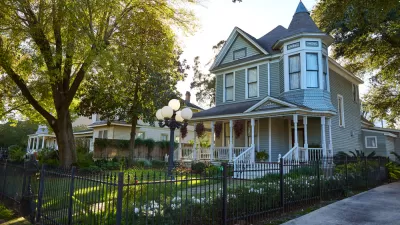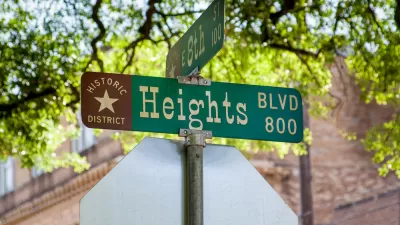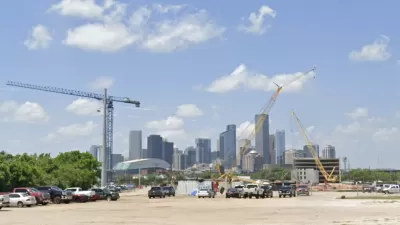Critics say the design of homes that come with gentrification is too often uninspired, incompatible, and downright ugly.

"When [Maria] Nicanor looks at the newer houses in Houston that she calls 'white elephants'—those wonky, stacked boxes that look more like what children build with Legos than what they draw with crayons—it’s not so much that she finds the architecture aesthetically dubious (though she does), it’s that she sees right through it to 'the systems that over decades have made it this way,'" writes Allyn West.
Nicanor is the executive director of the Rice Design Alliance, and her take on housing design in Houston describes the standardization of architecture as gentrification sweeps through that city and others throughout Texas.
The phenomenon reflects the inability of cities to balance new development with what has long existed there, says West. "Nicanor wonders what can be done at city hall, from rewriting zoning laws and enacting preservation ordinances to protecting renters and supporting community land trusts. Should the market make all the decisions?"
West looks at a variety of examples of this gentrification architecture in various Texas cities, including huge homes out of scale with the bungalows and cottages around them, packs of generic townhouses, and houses dominated by their garages.
Architect Ben Koush has an issue with mammoth homes, whose design reflects the market more than what neighborhoods need, notes West. "I think it’s almost disrespectful when you build a big, hulking box," Koush says. "But I’m also not a developer, so I see things differently than they do, and they think it’s probably stupid to build what I did. And they’re like, 'You’re an idiot.' And I’m like, 'You’re an idiot.'"
FULL STORY: The Architecture of Gentrification

Trump Administration Could Effectively End Housing Voucher Program
Federal officials are eyeing major cuts to the Section 8 program that helps millions of low-income households pay rent.

Planetizen Federal Action Tracker
A weekly monitor of how Trump’s orders and actions are impacting planners and planning in America.

Ken Jennings Launches Transit Web Series
The Jeopardy champ wants you to ride public transit.

Washington Legislature Passes Rent Increase Cap
A bill that caps rent increases at 7 percent plus inflation is headed to the governor’s desk.

From Planning to Action: How LA County Is Rethinking Climate Resilience
Chief Sustainability Officer Rita Kampalath outlines the County’s shift from planning to implementation in its climate resilience efforts, emphasizing cross-departmental coordination, updated recovery strategies, and the need for flexible funding.

New Mexico Aging Department Commits to Helping Seniors Age ‘In Place’ and ‘Autonomously’ in New Draft Plan
As New Mexico’s population of seniors continues to grow, the state’s aging department is proposing expanded initiatives to help seniors maintain their autonomy while also supporting family caregivers.
Urban Design for Planners 1: Software Tools
This six-course series explores essential urban design concepts using open source software and equips planners with the tools they need to participate fully in the urban design process.
Planning for Universal Design
Learn the tools for implementing Universal Design in planning regulations.
Heyer Gruel & Associates PA
Ada County Highway District
Institute for Housing and Urban Development Studies (IHS)
City of Grandview
Harvard GSD Executive Education
Toledo-Lucas County Plan Commissions
Salt Lake City
NYU Wagner Graduate School of Public Service





























